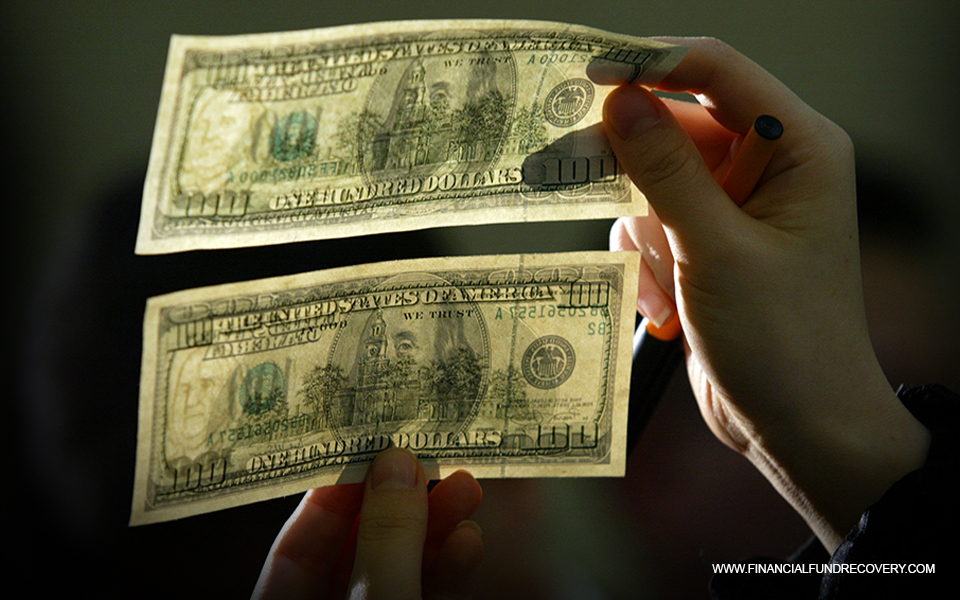It’s tempting to believe that encountering counterfeit money is uncommon. Cash, however, isn’t entirely extinct. Fraudsters seem to hit the news every week around the country.
Fake $100 bills are floating in Casper, Wyoming. In Hartville, Ohio, fake money was discovered. In Lubbock, Texas, fake money was distributed. Four bogus $100s were found in the tip jar of a musical group in Richland, Washington.
So, indeed, counterfeiting crime still exists, and if you spend cash regularly, or even just infrequently, knowing the symptoms of counterfeit bills may be beneficial. Use these methods to determine whether your U.S. dollars are genuine or fake.
Examine the paper’s texture.
This conclusion is based on intuition.
“Fake cash can be identified just by feeling the texture of the paper, ” says L. Burke Files, President of Financial Examinations & Evaluations, of an Arizona-based organization that conducts inspections, risk mitigation, and other forms of consultation.
Files, a financial detective with 30 years of experience, believes fake cash is an issue in all countries worldwide. He further claims that several business owners seem to accept – and then pass on – fake dollars while knowing they are fake.
“It only gets worse when someone doesn’t accept it,” Files recalls hearing from someone.
It’s simple to see why a company owner might intentionally pass on a fake bill. When a company owner or a customer surrenders illegal currency to the police, they are frequently not compensated for the account.
Look for color-changing ink.
The color of the paper currency you’re carrying should alter.
Seeing if the bottom right corner of the bill has color-changing ink is one of the simplest ways to recognize fake money. According to analysts, most of the firm’s dealings are in cash, and because those cash payments are frequently large, he and his staff have become novice cash gurus.
Except for the new $5 bill, you may bend it back and forth, and if the digit in the bottom right does not change from green to black or from gold to green, you’ve been given a fake dollar.
Examine the Watermark
“Real bills will have an imprint,” Experts explain. On some bills, it’s a duplicate of the bill’s face, but on others, it’s just an oval place. The watermarks on the right side of the bill should be noticeable if you hold it up to the light. If the imprint is a reproduction of the face, double-check that it fits the face.
If you bring the bill up to the light and there is no watermark, or if you can see the imprint even without putting it up to the light, it is most likely fake.
Keep an eye out for Textured Printing.
Textured printing is one of the most difficult elements of a legitimate banknote for forgers to copy. To detect the note, slowly and systematically draw your fingertip down it. Furthermore, the note will create friction, and the raised writing’s sharpness will cause tremors on your nail.
Experts recommend scrutinizing the imprint and checking for the color-changing ink if you don’t notice any vibration or friction.
Make use of an ultraviolet light source.
U.V. flashlights can be found on Amazon, home renovation, and construction stores.
“Place a bill on a white piece of bond paper and use your U.V. lamp to illuminate both,” Files suggests. “The fake currency will shine, whereas the real one will not.” Excluding the $1, the numeral strings could flash a different hue for each quantity.. $5 bills are blue, $10 bills are orange, $20 bills are green, $50 bills are yellow, and $100 bills are red.”
Use a magnifier
With the magnifying lens, what should you look for in the bill? Microprinting. On the $100 account, Files proposes gazing at Benjamin Franklin’s collar. Look at Grant’s collar if you have a $50 bill. On the $20 bill, look underneath the Treasurer’s signature, while on the $5 bill, Files recommends glancing at the eagle’s shield. Terms like “USA,” can be found in those places.
You’ll almost certainly need a magnifying lens to locate them. Although the presence of these words isn’t precisely a closely guarded secret, forgers have a hard time replicating microprinting.
What to do if your bills turn out to be fake?
On its webpage, the United States Department of Treasury offers various advice, such as:
- Don’t jeopardize yourself by saying anything: Shouting at the person who delivered you the bill is not a good idea. You could be mistaken, too, right. This could be an innocent customer who has no idea the account is fake.
- Don’t hand the bill back: Keep that bill and call the cops as soon as you can.
- Keep a record of everything that takes place: The treasury recommends that “if possible observe the passer’s and his companion’s descriptions such as the way they were behaving and note down the vehicle number.” Do this securely, though. Know the cops will almost certainly interview that person.
- Make a call to the officials: The Treasury recommends contacting the police or your nearest U.S. Secret Service office.


